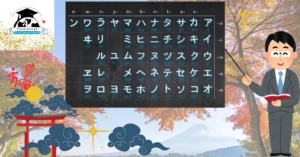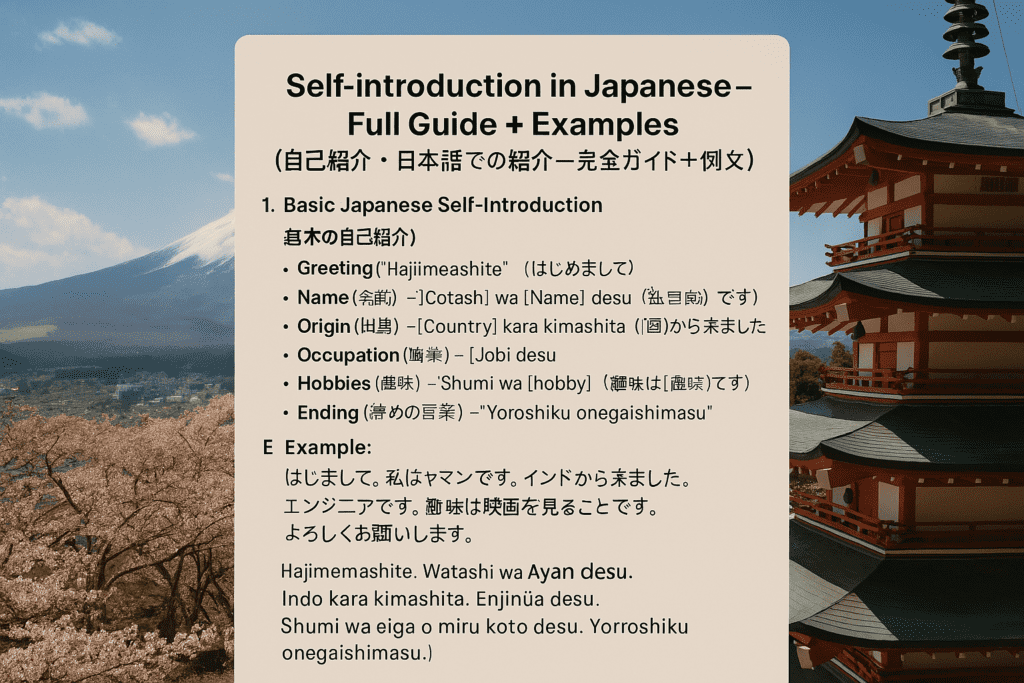Table of Contents
Toggle3 Simple Ways to Master Katakana—The Easy Foreign Words Alphabet
Together with Hiragana and Kanji, Katakana is one of three writing systems used in Japanese. Hiragana is used for native Japanese words and grammar; Katakana is mostly used for foreign loanwords, scientific phrases, brand names, and onomatopoeia. If you have seen words like Kosovo (koohii—coffee) or Passokon, personal computer, you have already seen Katakana in action.
This guide will look at:



Let’s dive in!

Why Is Katakana Important?
Katakana plays a crucial role in modern Japanese. Here’s why you should learn it:
1. Loanwords (外来語—gairaigo)
Japanese borrows countless words from English and other languages, adapting them into Katakana. Examples:
- ハンバーガー (hanbaagaa) – Hamburger
- テレビ (terebi) – Television
- スマホ (sumaho) – Smartphone
2. Technology & Brand Names
Tech products, companies, and scientific terms often use Katakana:
- インターネット (intaanetto) – Internet
- アップル (appuru) – Apple
- マイクロソフト (maikurosofuto) – Microsoft
3. Food & Drinks
Many food items in Japan are written in Katakana:
- ピザ (piza) – Pizza
- アイスクリーム (aisu kuriimu) – Ice cream
- レストラン (resutoran) – Restaurant
4. Pop Culture & Onomatopoeia
Anime, manga, and sound effects frequently use Katakana:
- ドラゴンボール (Doragon Booru) – Dragon Ball
- バン (ban!)—Bang! (sound effect)
Katakana vs. Hiragana—Key Differences
While Katakana and Hiragana represent the same sounds, they serve different purposes:
| Feature | Katakana | Hiragana |
|---|---|---|
| Usage | Foreign words, names, tech, emphasis | Native Japanese words, grammar |
| Appearance | Angular, sharp strokes | Curved, flowing strokes |
| Example | コーヒー (koohii—coffee) | こんにちは (konnichiwa—hello) |
Similarities:
- Both have 46 basic characters.
- Follow the same a-i-u-e-o vowel order.
- Include dakuten (゛) and handakuten (゜) for modified sounds (e.g., ガ ga, パ pa).
Katakana Chart—Full Character List
Here’s the complete Katakana syllabary:
Basic Katakana (清音—Seion)
| A | I | U | E | O | |
|---|---|---|---|---|---|
| K | カ (ka) | キ (ki) | ク (ku) | ケ (ke) | コ (ko) |
| S | サ (sa) | シ (shi) | ス (su) | セ (se) | ソ (so) |
| T | タ (ta) | チ (chi) | ツ (tsu) | テ (te) | ト (to) |
| N | ナ (na) | ニ (ni) | ヌ (nu) | ネ (ne) | ノ (no) |
| H | ハ (ha) | ヒ (hi) | フ (fu) | ヘ (he) | ホ (ho) |
| M | マ (ma) | ミ (mi) | ム (mu) | メ (me) | モ (mo) |
| Y | ヤ (ya) | ユ (yu) | ヨ (yo) | ||
| R | ラ (ra) | リ (ri) | ル (ru) | レ (re) | ロ (ro) |
| W | ワ (wa) | ヲ (wo) | |||
| N | ン (n) |
Modified Sounds (濁音—Dakuten / 半濁音—Handakuten)
3 Simple Ways to Master Katakana:
- ガ (ga), ザ (za), ダ (da), バ (ba), パ (pa) – Added marks change the sound.
- Example: ハ (ha) → バ (ba) → パ (pa)
Combined Sounds (拗音—Youon)
Small ャ, ュ, and ョ modify syllables:
- シャ (sha), チャ (cha), ニュ (nyu), ピョ (pyo)
Real-World Katakana Practice
Let’s test your Katakana reading with common words:
Food & Drinks
- コーヒー (koohii) – Coffee
- チョコレート (chokoreeto) – Chocolate
- ラーメン (raamen) – Ramen
Technology & Brands
- コンピューター (konpyuutaa) – Computer
- フェイスブック (Feisubukku) – Facebook
- ユーチューブ (Yuuchuubu) – YouTube
Everyday Words
- スーパー (suupaa) – Supermarket
- ホテル (hoteru) – Hotel
- タクシー (takushii) – Taxi
Tips for Mastering Katakana
- Flashcards & Apps—Use tools like Anki or Duolingo.
- Label Objects—Stick Katakana notes on everyday items.
- Read Menus & Brands—Practice with real-life examples.
- Katakana_Worksheets
Ultimate Hiragana Mastery—Unlock the Japanese Alphabet in Just 3 Days!
Conclusion
Katakana is essential for reading foreign words, tech terms, and pop culture references in Japanese. By recognizing patterns and practicing real-world examples, you’ll quickly become comfortable with this alphabet.
Ready to test your skills? Try reading these Katakana words:
- ビール (biiru) → ? (Beer)
- ゲーム (geemu) → ? (Game)
- ミュージック (myuujikku) → ? (Music)
Keep practicing, and soon, Katakana will feel like second nature!
Next Post: “Kanji Demystified—How to Learn Japanese Characters Efficiently”
Minna no Nihongo Listening: A Quick Guide for Japanese Learners
Katakana てんてん & まる Mastery Worksheet
(Save this template as a PDF by copying into Word/Google Docs)
Section 1: Concept Explanation
- てんてん (゛): Turns voiceless sounds into voiced sounds:
カ (ka) → ガ (ga) / サ (sa) → ザ (za) - まる (゜): Changes “H” sounds to “P”:
ハ (ha) → パ (pa)
Section 2: Dakuten (てんてん) Practice
A. Fill in the Romaji:
| Katakana | Romaji |
|---|---|
| ガ | _____ (ga) |
| ジ | _____ (ji) |
| ダ | _____ (da) |
| ベ | _____ (be) |
B. Convert These:
- キ → ギ (ki → gi)
- セ → _____ (se → ___)
- ト → _____ (to → ___)
Section 3: Handakuten (まる) Practice
A. Fill in the Romaji:
| Katakana | Romaji |
|---|---|
| パ | _____ (pa) |
| ピ | _____ (pi) |
| プ | _____ (pu) |
B. Convert These:
- ヒ → ピ (hi → pi)
- ヘ → _____ (he → ___)
- ホ → _____ (ho → ___)
Section 4: Real-World Examples
Circle the correct Katakana for these words:
- Guitar: ギター (gitaa) / キター (kitaa)
- Pizza: ピザ (piza) / ヒザ (hiza)
- Bus: バス (basu) / ハス (hasu)
Section 5: Challenge!
Write these in Katakana using てんてん or まる:
- “Dog” (dogu → ド**_**)
- “Pen” (pen → ペ**_**)
- “Zebra” (zebura → ゼ**_**ラ)
Bonus Tips:
- Dakuten Rule: Only affects K→G, S→Z, T→D, H→B.
- Handakuten Rule: Only applies to H-row (ハ→パ).
Save as PDF: Copy this into a doc, use a Katakana-friendly font (e.g., “MS Gothic”), and export!
Would you like:
- An answer key?
- More loanword exercises (e.g., ビール vs. ヒール)?
- Tracing guides for beginners?





